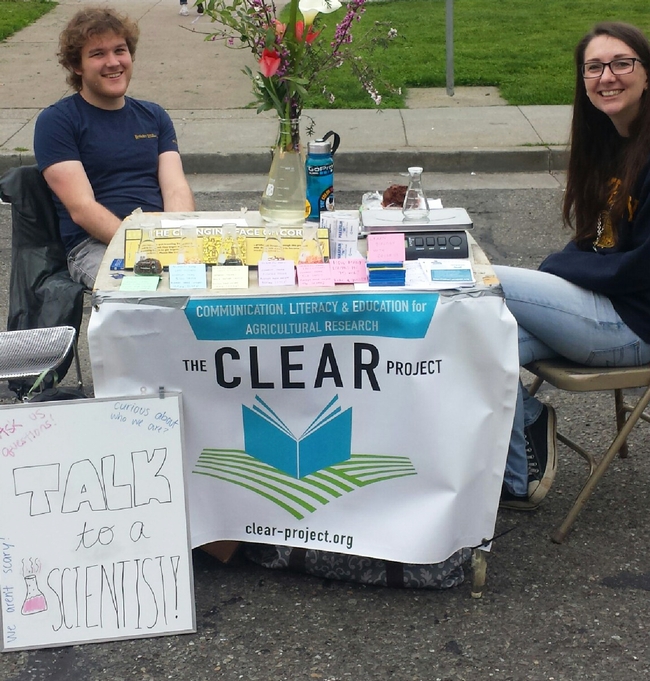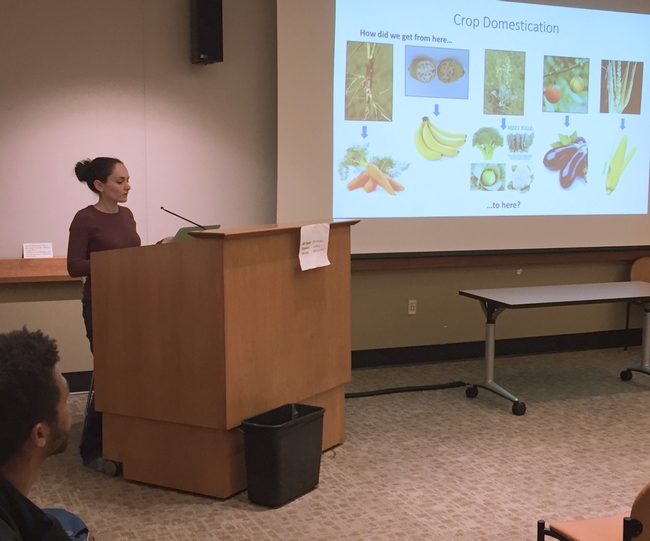Posts Tagged: students
Bohart Museum Open House: What Insects Do Bats Eat?
When you watch bats emerge at dusk in the summer from the Yolo Causeway, have you ever wondered what insects they eat? UC Davis doctoral candidate...
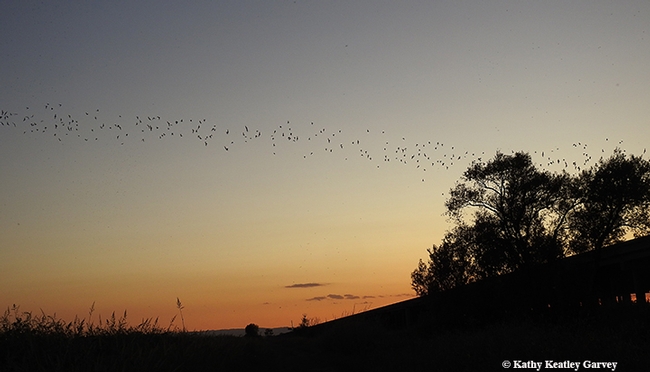
Mexican free-tailed bats leaving Yolo Causeway at dusk on Sept. 10, 2019. (Photo by Kathy Keatley Garvey)
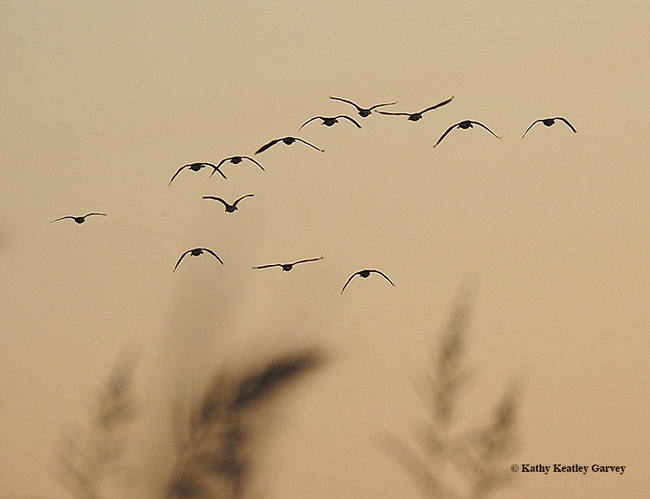
Mexican free-tailed bats ready to catch insects at the Yolo Causeway. (Photo by Kathy Keatley Garvey)
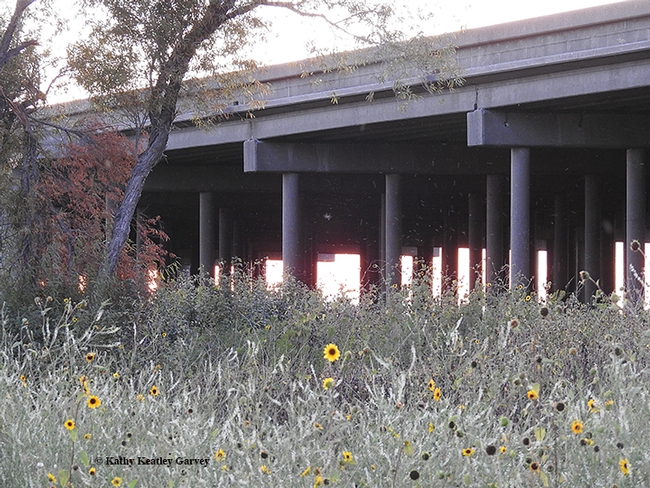
Thousands of bats nest in the Yolo Causeway during the summer. (Photo by Kathy Keatley Garvey)
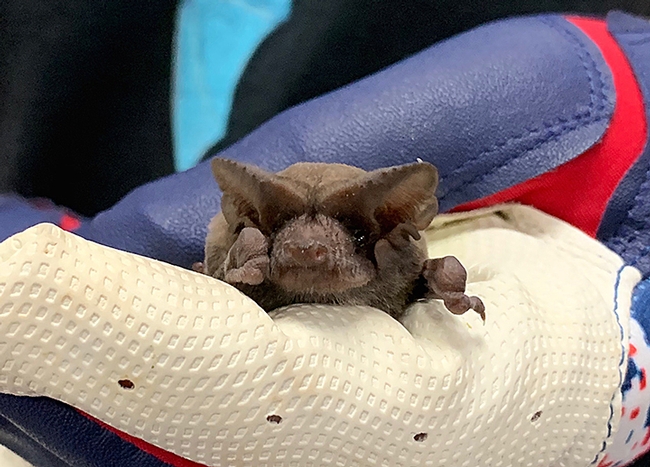
This is an image of a bat that Ann Holmes studies. (Photo by Shayan Kaveh)
UC Davis Design, Entomology Students to Showcase 'The World of Insects' at Art Exhibition June 6
Take the creative and collaborative minds of students studying design and entomology at the University of California, Davis. Add an innovative...
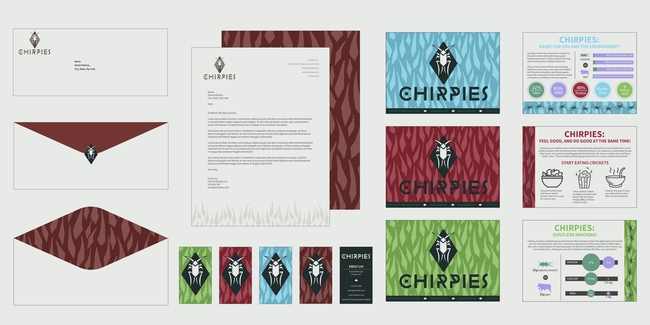
Graphic design examples by UC Davis student Emily Liu comprise her business system revolving around crickets: "Chirpies."
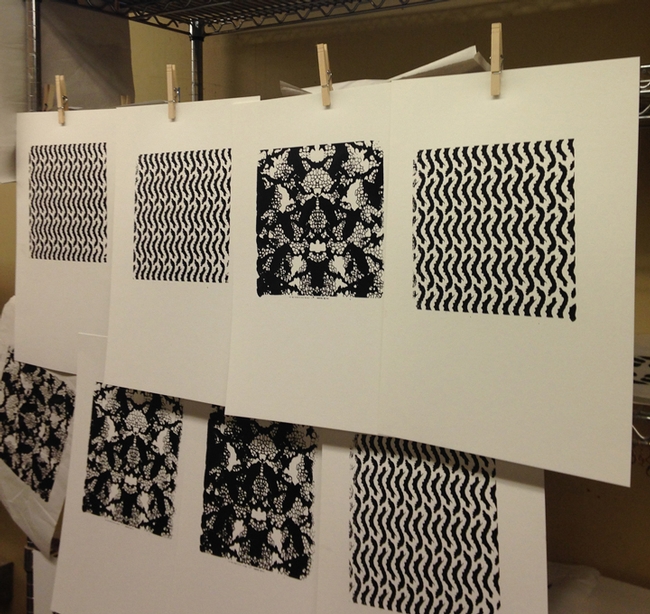
Silkscreen work hanging on a wire. It will be displayed June 6 at an art exhibit from 6 to 8 p.m. in the Environmental Horticulture courtyard.
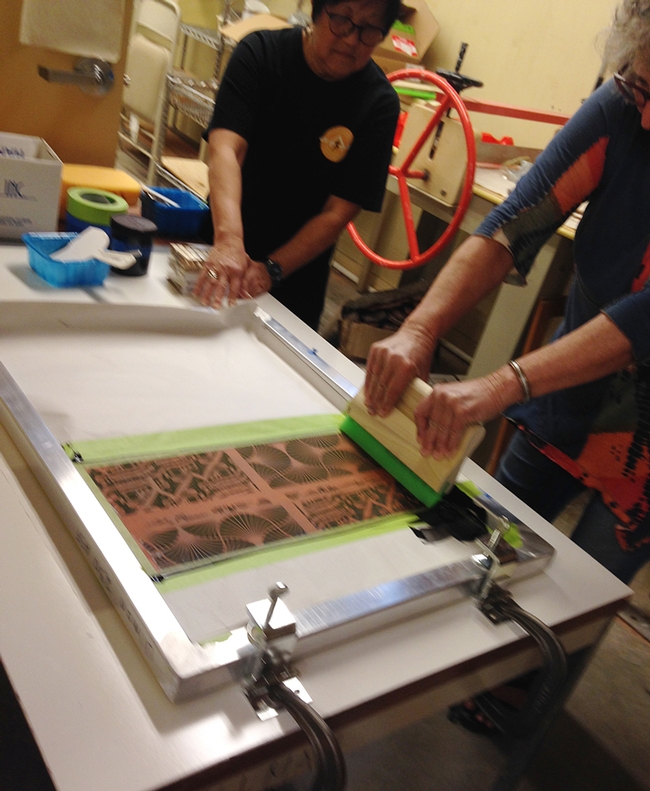
Demonstrating the silkscreen process are Gale Okumura (back) and Diane Ullman, partially seen.
Bumble Bees on the Move
Bumble bees stole the show during the Graduate Student Poster Research Competition at the fourth annual UC Davis Bee Symposium, themed "Keeping Bees...
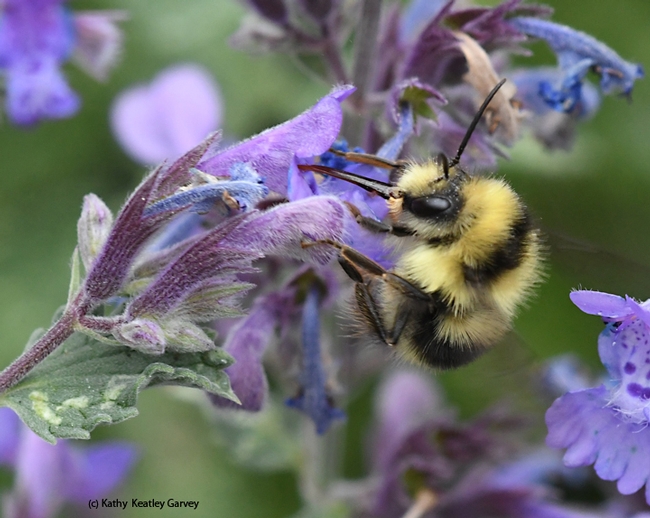
A bumble bee, Bombus melanopygus, nectaring on lavender in Vacaville, Calif. (Photo by Kathy Keatley Garvey)
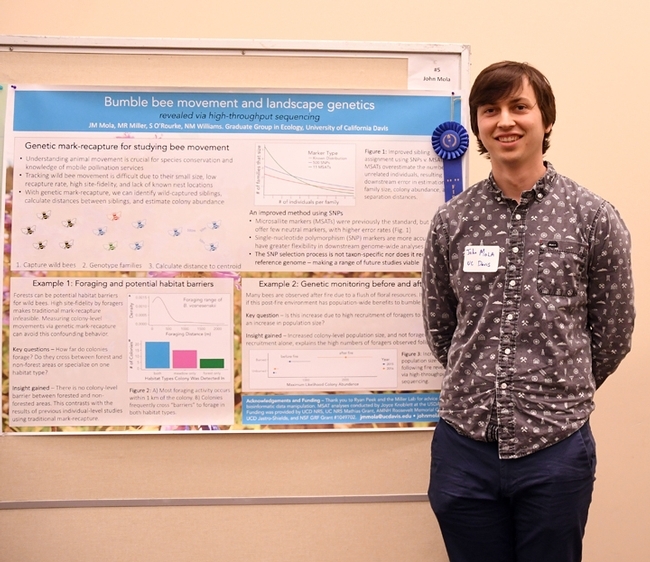
UC Davis doctoral student John Mola won the Graduate Student Research Poster Competition at the UC Davis Bee Symposium with his work on bumble bees. (Photo by Kathy Keatley Garvey)
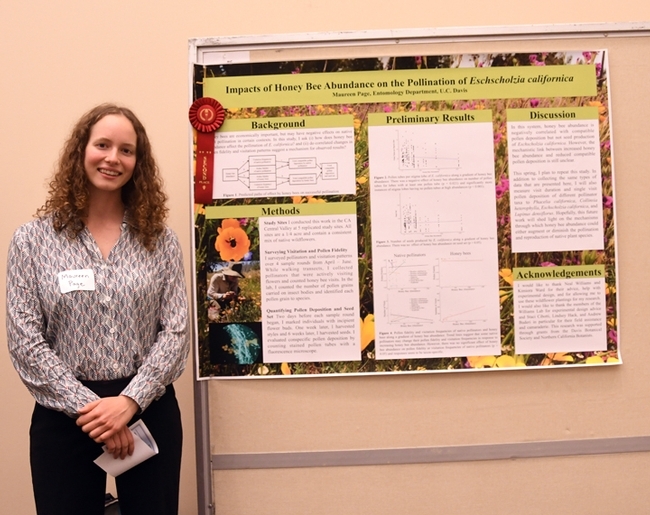
UC Davis doctoral student Maureen Page stands by her research poster on honey bees that won second place at the UC Davis Bee Symposium. (Photo by Kathy Keatley Garvey)
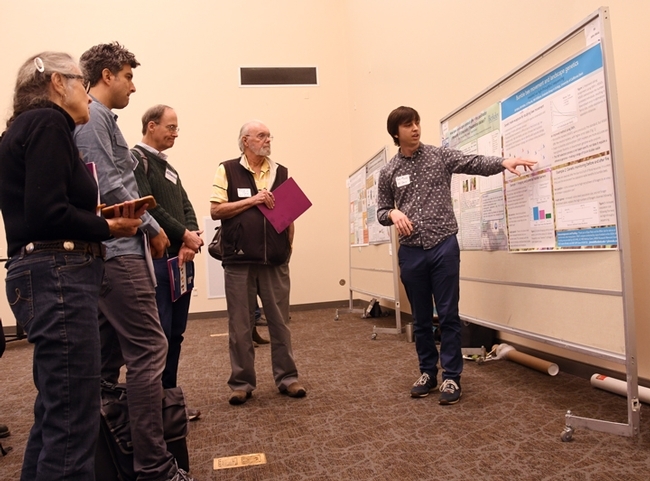
UC Davis doctoral student John Mola explains his research to the judging panel. From left are Mea McNeil, timer; Santiago Ramirez of the UC Davis Evolution and Ecology faculty; Tom Seeley of Cornell, the keynote speaker at the symposium; and Robbin Thorp, distinguished emeritus professor of entomology at UC Davis. (Photo by Kathy Keatley Garvey)
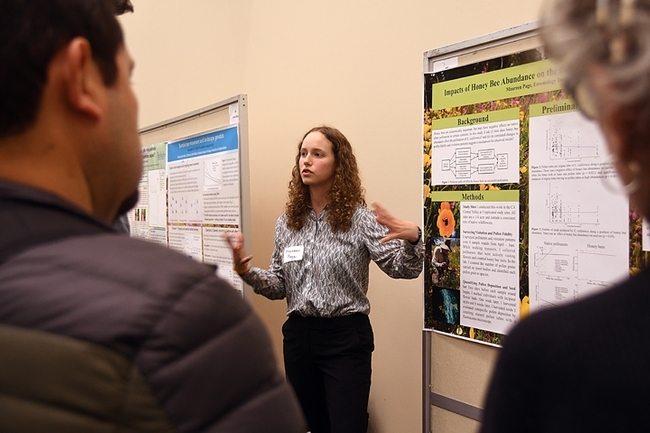
UC Davis doctoral student Maureen Page tells judges that honey bees may have negative impacts on native bees and native plant communities in certain contexts. (Photo by Kathy Keatley Garvey)
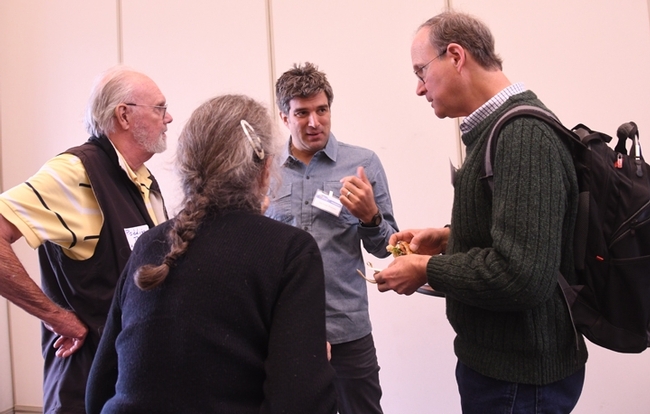
The panel of judges conferring. In the foreground is timer Mea McNeil. In back (from left) are judges Robbin Thorp and Santiago Ramirez of UC Davis, and Tom Seeley of Cornell. (Photo by Kathy Keatley Garvey)
The Beatles Have Nothing on The Beetles
It's the "in" thing. Insects--their beauty, their structure, their diversity--are inspiring noted fashion designers, but those fashion designers are...
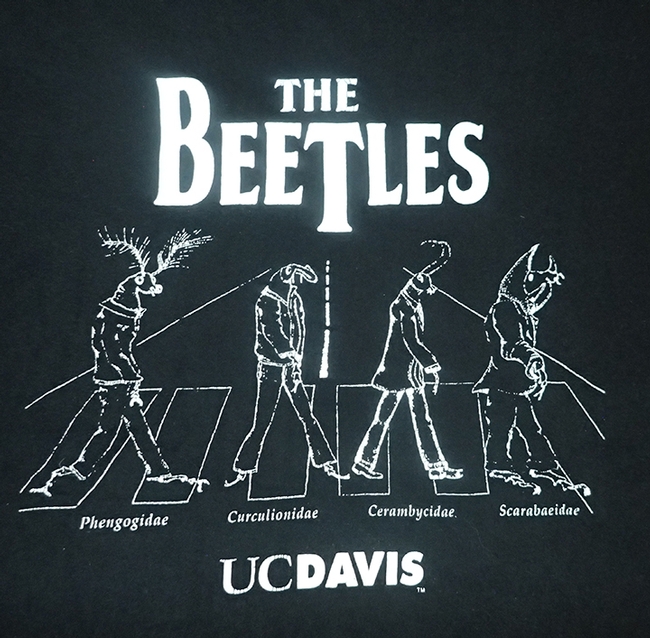
"The Beetles" is one of the most popular t-shirts designed, crafted and sold by members of the UC Davis Entomoogy Graduate Students' Association.
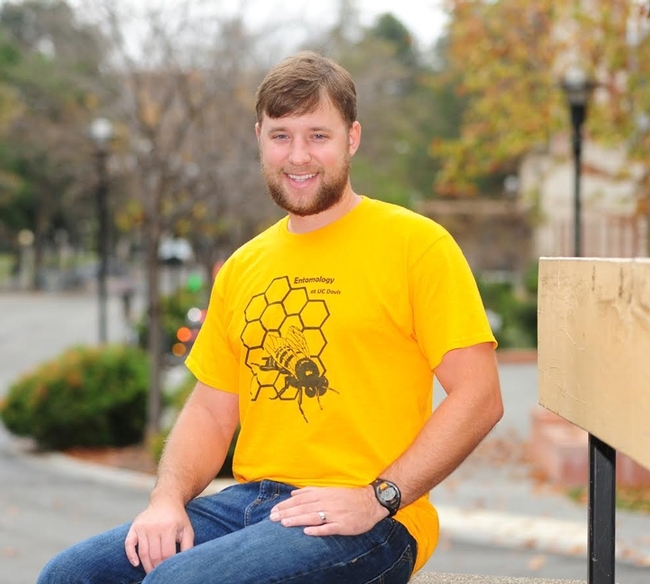
Honey bees are also a favorite. This t-shirt was designed by graduate student Danny Klittich, who now has his doctorate in entomology. (Photo by Kathy Keatley Garvey)
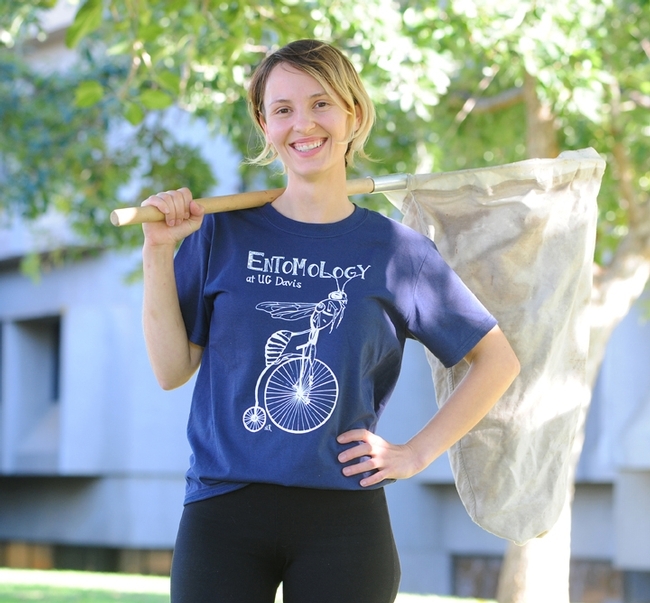
Stacey Rice, a former junior specialist in the lab of the late Extension entomologist Larry Godfrey, designed this t-shirt she is wearing. This is "Hymenoptera on Bicycle."(Photo by Kathy Keatley Garvey)
Scientists-in-training learn to tell a CLEAR story
On the second Saturday of every month, Tuesday Simmons heads to the downtown Berkeley farmers market. Among the produce stalls and coffee stands, she sits behind a table with a sign that reads “Talk to a scientist!” She and other students spend the day fielding questions from strangers about topics that range from genetically modified foods to climate change and more.
“We never know who we'll talk to at our public events, or what kinds of questions we'll be asked,” said Simmons, a graduate student in the UC Berkeley Department of Plant and Microbial Biology (PMB). “This makes the farmers markets fun.”
Simmons' monthly visits to the farmers market are organized by the student group CLEAR (Communication, Literacy, and Education for Agricultural Research). The group aims to mentor the next generation of science communicators by engaging in open, transparent, and active conversations with the public about science and research. Funded through the University of California Global Food Initiative, CLEAR offers a series of scientific outreach events including activities at the farmers market, student-led lectures at libraries, and discussions with the public at local pubs.
The events are aimed at making science accessible.
“For members of the public who think scientists are a group of scary, isolated individuals funded by companies with special interests, these brief exchanges can be enough to make them question that assumption,” said Simmons, who also noted that translating her microbiology research for the public has helped improve her communication skills.
Learning to create compelling and impactful science communications is also a draw for Daniel Westcott, who joined the group in 2015. As a PMB graduate student who studies a specialized field — photosynthetic energy conversion in algae and plants — Westcott noted that discussing his research with non-scientists felt like a challenging hurdle to overcome.
Students like Westcott practice their communications skills through writing for the CLEAR blog. In their monthly blog posts, group members have tackled the economics of the meat industry, and the science behind the Impossible Burger, and the difficulty in labeling foods as “natural,” as well as highlighting CLEAR's ongoing outreach efforts.
Westcott understands that sharing his research with the public through the blog and other CLEAR activities is essential.
“Nearly two million scientific articles are published each year,” Westcott said. “Today's successful scientists must be media savvy in order to rise above the noise.”
Launched in 2015, CLEAR began as a project across three UC campuses — Berkeley, Davis, and San Diego. At Berkeley, co-founders Peggy Lemaux and Dawn Chiniquy, a PMB postdoctoral fellow, saw the funding as an opportunity to focus on outreach activities and mentorship opportunities, such as helping graduate students write for and talk to non-scientific audiences.
Lemaux is a UC Cooperative Extension specialist and PMB faculty member who studies food crop performance and quality. She said CLEAR is a student-driven organization. All members of CLEAR are volunteers, and a mix of undergraduates, graduate students and postdoctoral researchers participate in the group's activities. Many of members are PMB students, but students from other scientific fields also participate in CLEAR's events and monthly meetings. Student scientists from across campus are welcome.
As the faculty organizer of CLEAR, Lemaux mentors students by providing feedback and guidance on their public presentations and blog posts. Recent student-led lecture topics include pesticide use and genetically modified foods, and as new members join the group, they'll continue to add new presentations to their calendar of events.
CLEAR also hosts workshops and trainings to foster students' science communication and writing skills. Last spring, the group invited NPR science writer Joe Palca to present a talk, “Real News or Fake Science.” More recently Brian Dunning of Skeptoid gave a presentation tittled “Science Communication in a Minefield of Fiction.” This fall, Sara ElShafie, a graduate student in the Department of Integrative Biology and founder of Science Through Story, will give a science communication workshop for CLEAR students.
In recent years, Lemaux has seen a shift in students' interest in outreach and science communication.
“Today's generation of scientists understand that they must be scientists in the lab and translate the message of their research — and research in general — for the public,” she said.
Some CLEAR students have pursued careers in public communication after leaving Berkeley. Mikel Shybut, PhD ‘15 Plant Biology, is now a fellow at the California Council on Science and Technology where he provides scientific analyses to state legislators. After arranging a day of informational meetings in Sacramento for a group of CLEAR students, Shybut commented, “It's heartening to see what CLEAR has accomplished in the last two years. The group's outreach efforts demonstrate that scientists can be effective messengers.”
Visit CLEAR's calendar to learn more about upcoming events. In September join CLEAR at the following events:
-
Downtown Berkeley Farmers Market: Come chat with CLEAR members and check out their science demos at the farmers market. They feature a different science theme each month and are always looking forward to listening to community members' science questions and concerns.
-
Science Café with PMB professor John Taylor: Join CLEAR members for a beer, fun fungus exhibits, and Dr. John Taylor's tentatively titled "Felons, Fungi and Rats: California's Valley Fever Epidemic.”


